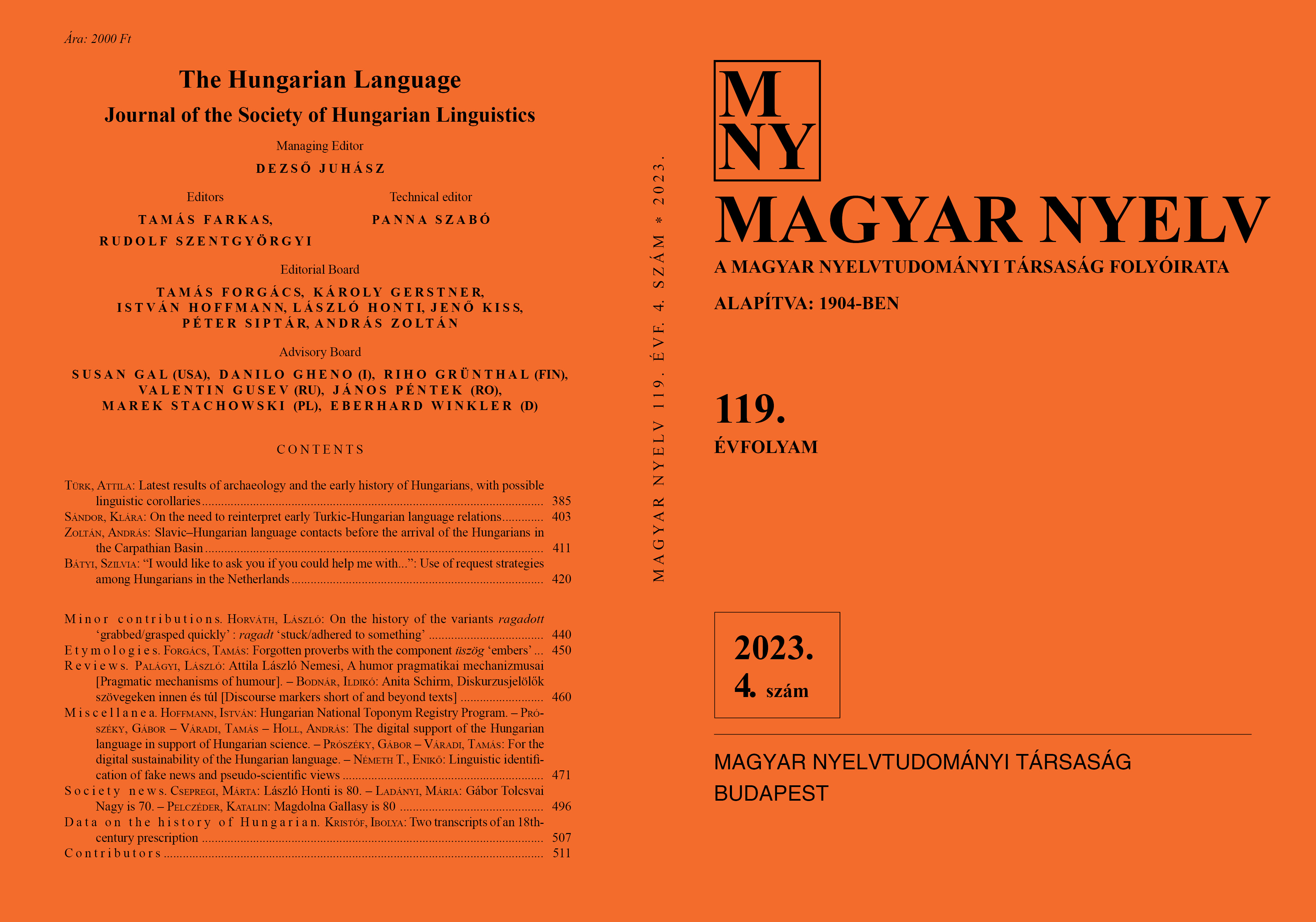Linguistic identification of fake news and pseudo-scientific views
DOI:
https://doi.org/10.18349/MagyarNyelv.2023.4.490Keywords:
fake news, pseudoscientific texts, automatic fake news detection, argumentation fallacies, strategies in language useAbstract
4th Subprogramme of the Science for the Hungarian Language National Programme of the Hungarian Academy of Sciences (MTA)
The paper intends to present the main characteristic features of the Subprogramme for Linguistic Identification of Fake News and Pseudo-scientific Views, part of the Science for the Hungarian Language National Programme of the Hungarian Academy of Sciences (MTA). The Subprogramme has started on the 1st of September 2022 and lasts until the 30th of November 2026. The project is implemented by the MTA-SZTE-DE Research Group for Theoretical Linguistics and Informatics. The research group has three aims: (1) to provide a solid, epistemological ground for the investigation of fake news and pseudoscientific texts, (ii) to diagnose the linguistic features and pragmatic strategies of fake news and pseudoscientific texts in the field of healthcare, and, (iii) to develop automatic fake news detection devices such as Android and iOS mobile phone applications as well as a browser extension. The research is unique in the sense that it involves processes of basic research, applied research, and technological innovations in one coherent project. The results may contribute to the unmasking of pseudoscientific communication and the radical reform of science communication.
Downloads
Published
Issue
Section
License
Copyright (c) 2023 Enikő Németh T.

This work is licensed under a Creative Commons Attribution-NonCommercial-NoDerivatives 4.0 International License.
Magyar Nyelv is a Diamond Open Access periodical. Documents can be freely downloaded and duplicated in an electronic format, and can be used unchanged and with due reference to the original source. Such use must not serve commercial purposes. In the case of any form of dissemination and use, Hungarian Copyright Act LXXVI/1999 and related laws are to be observed. The electronic version of the journal is subject to the regulations of CC BY-NC-ND (Creative Commons – Attribution-NonCommercial-NoDerivatives).
The journal permits its authors, at no cost and without any temporal limitation, to make pre-print copies of their manuscripts publicly available via email or in their own homepage or that of their institution, or in either closed or free-for-all repositories of their institutions/universities, or other non-profit websites, in the form accepted by the journal editor for publication and even containing amendments on the basis of reviewers’ comments. When the authors publicize their papers in this manner, they have to warn their readers that the manuscript at hand is not the final published version of the work. Once the paper has been published in a printed or online form, the authors are allowed (and advised) to use that (post-print) version for the above purposes. In that case, they have to indicate the exact location and other data of the journal publication. The authors retain the copyright of their papers; however, in the case of an occasional secondary publication, the bibliographical data of the first publication have to be included.



